How to propagate cherries?

Cherries are found in almost every garden plot, even the smallest. And if every year she pleases with a bountiful harvest of large and sweet berries, then the question arises about the reproduction of such an effective variety. Today we will talk about what methods and techniques are used for this.
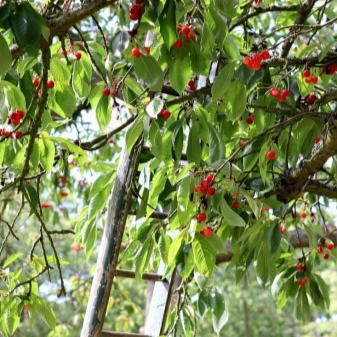
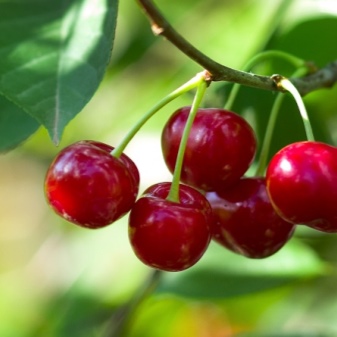
Breeding time
To accurately determine the timing of the breeding of cherries, it is necessary to take into account the varietal characteristics of the plant, the type of seedling (it can be grafted or rooted), the natural and climatic conditions in the growing region, as well as the features of the plots in the garden. So, for the Moscow region and the central part of Russia, the optimal period will be the spring period after the snow melts and before the swelling of the first buds. Usually this is mid-April, when the snow has melted, the earth has already dried up and warmed up. But the autumn planting in these regions is used exclusively for frost-resistant varieties.
If we are talking about the southern regions, then cherry seedlings can be planted as early as March. And also planting is carried out in the fall before the first frost. It is best to complete the work before mid-November. If the seedlings were prepared in the fall, you should not risk them, it is better to dig in before the onset of the warm season. To do this, prepare a trench 40-50 cm deep and place the seedlings in it at an angle of 30 degrees so that their tops are facing south. Then the roots are sprinkled with earth, lightly tamped, watered abundantly and covered with spruce branches.
In northern regions, where frosts come early, it is best to do this during September.
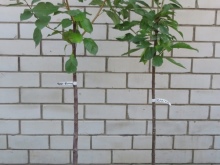
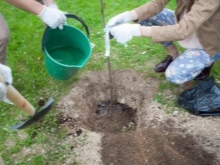
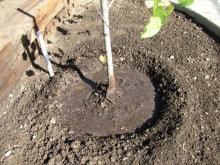
How to propagate by seed?
The seed propagation method is optimal for growing rootstocks, since it does not have the main varietal characteristics of the mother plant. This technique has its pros and cons. Let's first dwell on the merits.
- The ability to germinate seeds at home, get a lot of planting material without much effort and cost.
- Young plants are cold resistant. Even if in the first winter they freeze out, the young shoots will retain their maternal characteristics in full and will revive with the onset of warmth.
- Such seedlings are resistant to most fungal and bacterial diseases, therefore they are optimal as a rootstock.
There are also disadvantages.
- A tree grown from a stone gives abundant growth and will have to fight with it annually.
- If such plants are not grafted, then they will bear fruit no earlier than in the tenth year.
- Such trees often produce small fruits and low yields.
This method is mainly used by breeders if they plan to get a new variety of cherries or grow a stock.
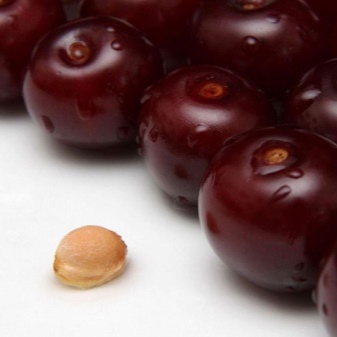
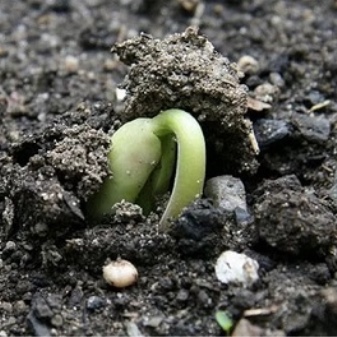
The process of growing a tree from a bone is lengthy. First of all, attention must be paid to the preparation of seed material. To do this, select the largest cherry berries, remove seeds from them, rinse thoroughly and place in a pale solution of potassium permanganate for 15-20 minutes. This is followed by the stage of stratification and seedling preparation. It includes several steps. Disinfected bones are placed in any plastic container and left in a dark, warm place until winter.
In December, the bones are transferred to wet sawdust and kept for 8-10 hours. Then covered with a foil with holes, and placed for a week in a dark place with room temperature.During this period, the sawdust should maintain its moisture, so the water will have to be topped up every day. Further, the seeds are stratified. This task is not very difficult. You just need to fill the container with a mixture of river sand and moss, taken in equal proportions, moisten and place the bones in it for 3 months. All this time, the container should be in a cool place, a cellar or refrigerator will do. Seed checks should be carried out daily from February onwards. As soon as you notice cracked seeds, they must be removed and transplanted into pots to get sprouts.
Seeds are planted at a depth of 2-2.5 cm at a distance of 2 cm between themselves. After that, the container is covered with plastic wrap and placed in a bright, but not hot place. The first shoots should appear in 3 weeks. If there are a lot of seeds, then in autumn they can be planted immediately in open ground to a depth of 3-4 cm. Of course, the percentage of germination in this case will be an order of magnitude lower, but young plants will turn out to be more adapted to the climatic features of their region. The additional bed is covered with spruce branches and snow, and in the spring the strongest plants are moved to a permanent site in the garden.

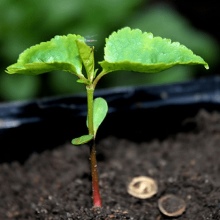

Propagation by cuttings
Seed trees do not replicate the characteristics of the parent plant. Therefore, this method of reproduction in practice is rarely used by gardeners. Most of them prefer propagation by cuttings - it allows you to get plants with the same characteristics and the same yield as the mother bush. Vegetative propagation is a simple method of growing new cherry trees in the garden. It applies to both regular and bush felt cherries. Moreover, it does not require any expenses.
The benefits of propagation by cuttings.
- Cherries are easy to graft and propagate by layering.
- It is very easy to grow seedlings, they do not require any special care.
- Trees grown vegetatively grow rapidly and bear fruit in the third year.
- The cherry tree is weather resistant.
However, there are also disadvantages.
- Such trees give a lot of growth. From time to time it will have to be removed, otherwise it will fill the entire garden.
- Due to the cutting of young shoots, the parent plant may yield a lower yield the next year.
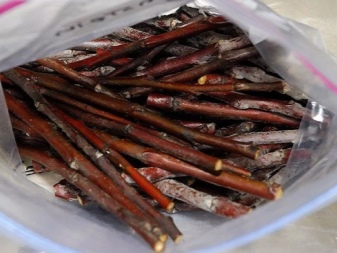
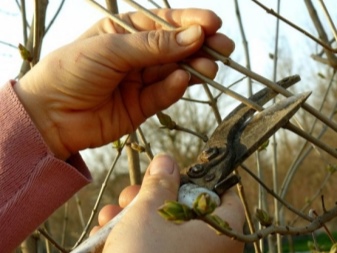
Overgrowth
This technique is only suitable for self-rooted varietal plants. Only in this case the seedling can preserve the basic dignity of the parent. For effective reproduction, very young and old shoots are not used; it is best to take offspring of 2-3 years old with existing branches. Youngsters are selected in the spring. For this, the most powerful shoots growing at a distance of 40-80 cm from the main tree are suitable. Shoots in the immediate vicinity of the parent tree are likely to feed on its vital juices and do not develop their own root system.
In order to stimulate the rooting of selected shoots, you need to follow a few simple steps. First, the roots of the mother and young plants should be separated - in October or at the beginning of spring, the root is cut from the side of the parent tree, deepening the shovel into the ground to the length of the bayonet. Then it is carefully removed so as not to violate the integrity of the earth layer.
After that, it remains only to wait for the selected growth to take root, and it will be possible to move it to a permanent site in the garden.
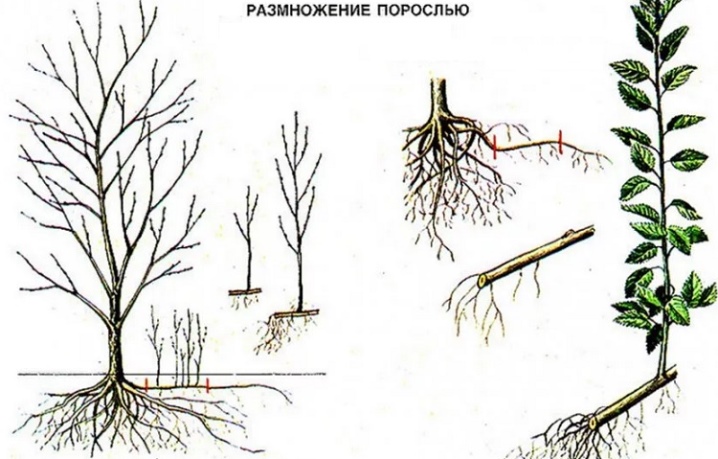
Layers
Cherries can be propagated by horizontal and vertical layers. Horizontal ones involve root cuttings. Planting material is harvested in April, for this, the upper part is exposed in the place where the accumulation of roots is minimal.
Then follow simple steps.
- Choose a spine growing horizontally with a thickness of 8-10 mm.
- Carefully cut it off and divide it into several petioles 7-8 cm long.
- Planting material is laid in a trench, deepening by 5-7 cm and sprinkled with earth.
As the earthen coma dries, watering is necessary. In the summer, you can carry out three feeding. At the beginning of June, urea is used, in the middle of summer - ready-made complex mineral compositions. And closer to autumn, they are watered with a weakly concentrated slurry. When shoots come from the roots, they can be planted in a permanent place.
Vertical layering is used if an old tree grows on the site that you plan to cut down. The process is also not difficult.
- First, cut down the tree, leaving a small stump at ground level.
- As soon as vertical layers grow on the stump, they should be immediately sprinkled with earth. Every time the shoots grow, the earth needs to be poured, hilling them. This will allow the seedling to take root.
Already a year later, layers with their own root system will appear on the stump. All that remains for the gardener is just to carefully separate them and move them to the place selected for the young tree.
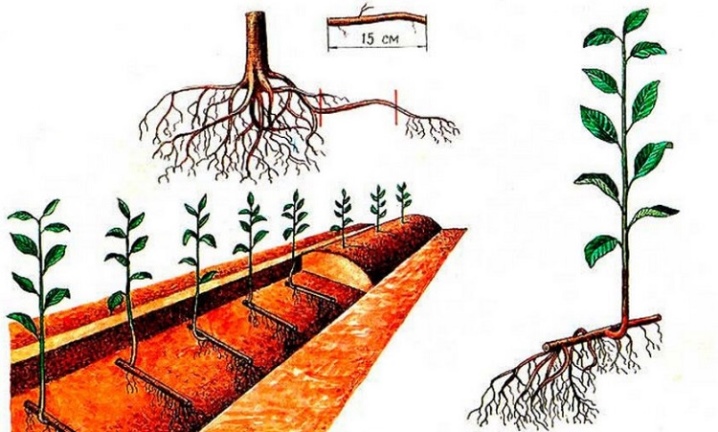
Green cuttings
One of the most common methods, which has been tested for centuries, is green cuttings. The method is optimal for inexperienced gardeners. The main advantage of this technique is the complete preservation of the varietal characteristics of the mother plant. In addition, one tree allows you to get a large number of full-fledged viable cuttings.
Work on the procurement of planting material is usually carried out at the end of May or during June. You need to cut young shoots, in which the lower part began to be covered with bark, and the upper part remained green. Cuttings 10-12 cm long are cut from them, while 3-4 buds should remain in each. The lower cut is made with a slope of 5-10 mm from the lower kidney. The upper one is made oblique just above the upper kidney. Only green shoots are suitable for this breeding method. If you use lignified, they will not be able to grow roots.
In order for the root system to form as quickly as possible, the prepared shoots must be kept in a solution of "Kornevin" or any other growth enhancer. To do this, it is not necessary to soak the entire stalk, it is enough just to lower 1.5-2 cm from the bottom and leave it for a day. After that, the shoots are placed in prepared containers and filled with soil mixture. It is made up of three layers:
- from below put expanded clay, crushed stone, ground stone or any other drainage;
- the middle is filled with a mixture of peat and sand, taken in equal proportions;
- sprinkle on top with sand or perlite.
Each layer should have 5-7 cm. The cuttings should be planted to a depth of 2-3 cm. Cover with a jar or film on top. While the cuttings are forming their root system, the soil is sprayed rather than watered. At the same time, it is important not to allow the earthen coma to dry out, but it is also not worth creating an excess of moisture. By the end of summer, the greenhouse is removed, and if the climate permits, then in September, the petioles, along with their roots, can be placed in a permanent place.
If winter comes early in the region, then it is better to leave the cuttings for growing until April next year.
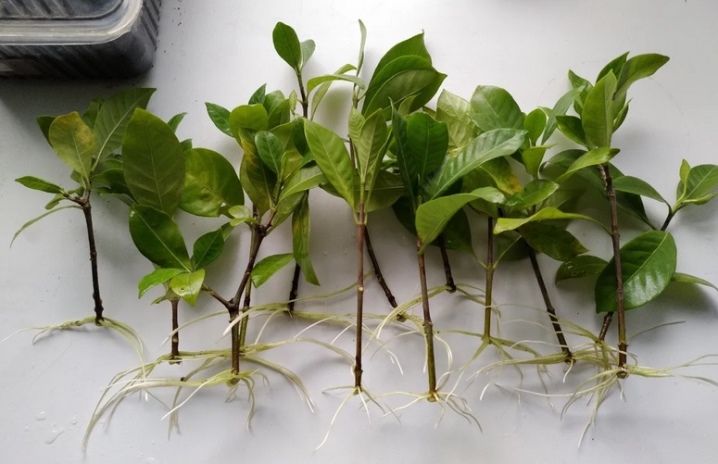
How to dilute by vaccination?
Reproduction by grafting allows you to preserve the yield of an old tree, improve the protective parameters of the plant or expand the varietal variety of cherry trees in the garden. In this case, fruiting begins already 2-3 years after vaccination. Such manipulations allow you to effectively rejuvenate an old plant, make it resistant to drought, negative temperatures and the effects of pathogenic microflora.
The essence of vaccination is to combine several parts from different cherries into one whole. These snippets are called:
- scion - taken from the ground part of the cherry;
- rootstock - an underground part, obtained, for example, from a self-rooted growth or an old stump.
The procedure is best carried out in March or April, when sap flow and vegetation are just beginning.If desired, you can vaccinate in the summer, but in this case you need to wait until mid-August, when the cherry branches stop growing.
Several grafting methods are used for cherries. When implementing them, you must adhere to certain rules.
- The rootstock and the scion must be compatible with each other.
- Both fragments must be taken from plants adapted to local climatic conditions.
- The stock must have a developed root system.
- It is not recommended to combine varieties with different ripening periods in one tree.
- Fragments of young trees are taken as a rootstock - the scion will take too long to take root on old wood.
- In cold areas, bird cherry is often used as a stock. It makes cherries resistant to frost.
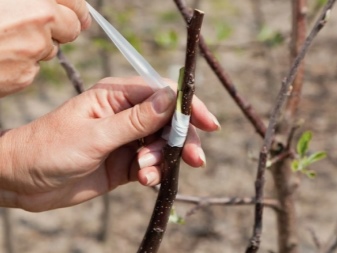
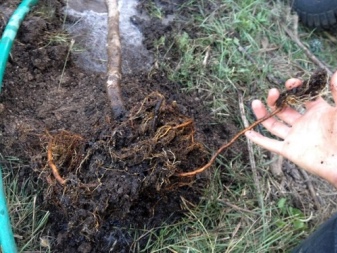
Budding
This is a kidney vaccine and is considered the safest method. Even if it does not take root, the small incision will quickly heal, and the tree will regain its strength in the shortest possible time.
- First you need to take a young branch of the rootstock, and cut it off, grabbing a piece of bark by 1.5 cm.
- A T-shaped incision should be made on the bark of the selected branch, and its edges should be gently pushed apart.
- A kidney is inserted into the resulting pocket, and the edges are closed, leaving only the peephole visible.
- At the end, the operation site is wrapped, only the protruding kidney should remain free. These works are carried out in early spring, when sap flow is just beginning, and the bark is easily separated from the woody base.
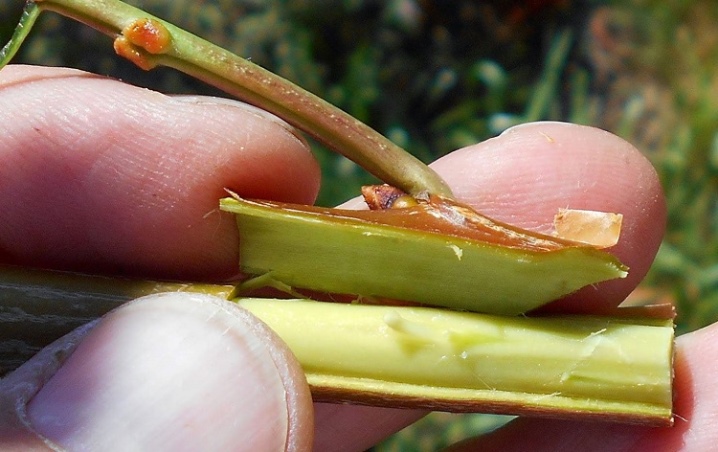
Cleavage
One of the most effective ways. It is most often used for old trees that require rejuvenation. The rootstock and the scion in this case may differ in their size. As a stock, you can use a tree trunk or a place where old branches were cut.
Events are held in spring in several stages.
- First, a stalk is prepared, on which 3-4 buds are preserved.
- The base of the cut is made on both sides in such a way that a wedge-shaped shape is formed.
- After that, a split 10-12 cm deep is formed in the stock with a knife.
- The scion is inserted into the resulting hole to such a depth that the bark of both fragments coincides.
- The junction is treated with garden varnish and wrapped.
If everything is done correctly, and the vaccine has taken root, then in 3-4 weeks buds will appear on the rootstock.
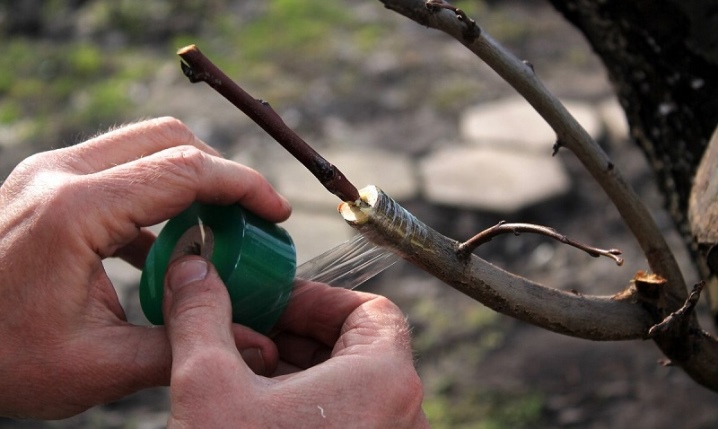
Helpful hints
Novice gardeners often wonder which cherry propagation method is the easiest. The answer is obvious - grafting. It does not require any specialized knowledge or tools. In addition, it will allow you to get a lot of planting material - this will seriously increase the overall chances of the effectiveness of growing new cherries. Breeding by layering also does not cause great difficulties. It is only necessary to strictly follow the recommended sequence of actions, and take care of the shoot, provide watering and feeding at the rooting stage.
The grafting method is used by experienced gardeners. It requires knowledge and skills. In any case, the gardener should be patient. Reproduction does not give instant results. You can achieve fruiting no earlier than in 2-4 years.
Some gardeners are wondering if it is possible to plant several varieties on the same tree. This is only permissible if they have the same flowering period.
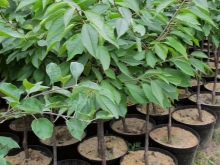
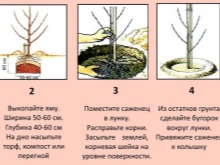
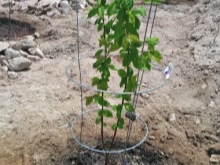





The comment was sent successfully.